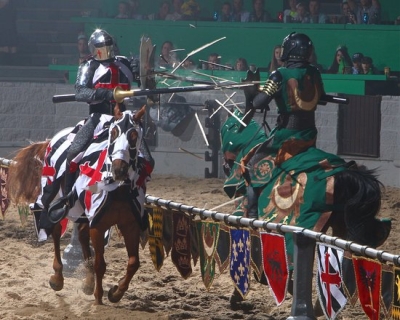
Hosted in special arenas, called lists, within castle walls or in nearby fields, the joust was one of the most thrilling forms of entertainment in the Middle Ages. Two mounted knights in gleaming armor spurred their warhorses at each other in a ferocious charge. Just before the moment of impact, they leveled their 12-foot (3.6-m) lances and – crash! – the weapons splintered against shield and helm. (A knight scored points in a joust by shattering his lance against his opponent’s shield or helm – or knocking him off his horse.)
The joust was part of a larger event called the tournament, which evolved from military training into a spectacle for lords, ladies, and peasants alike. Despite strict rules, tournaments were dangerous games; many knights were permanently injured or killed in jousts. King Henry II of France died in a joust when a lance pierced his visor. But success in the tournament outweighed the risks for knights, who played for keeps. A victor won the loser’s armor and horse, which could be ransomed for a small fortune. The tournament champion might win the favor of a lady in the stands.
Picture Credit : Google

